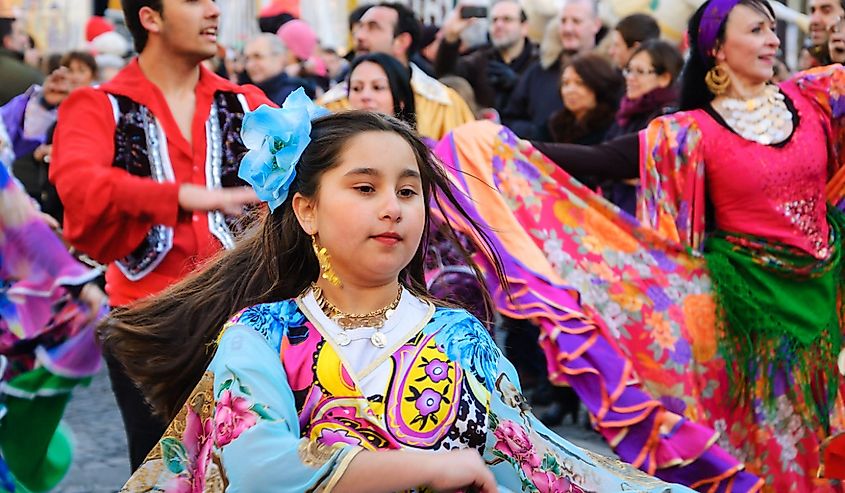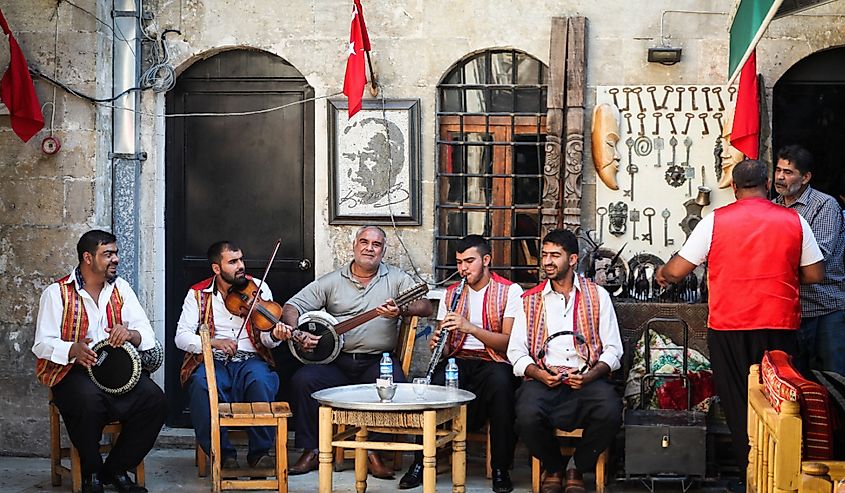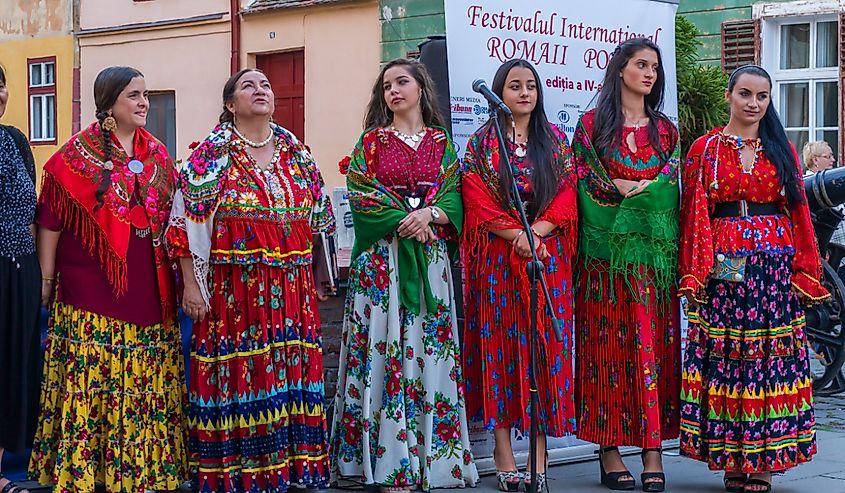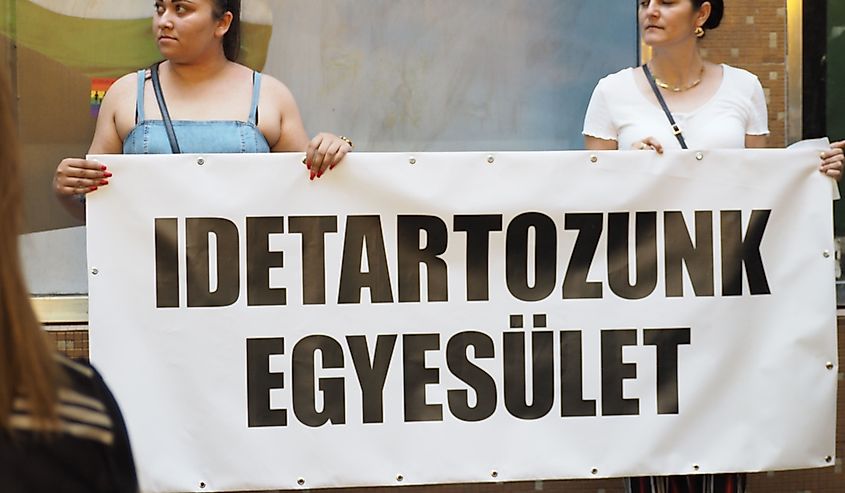
The Hidden Discrimination Against American Roma
The Romani people, also called gypsies, which can be considered a derogatory term, are commonly regarded for their influence and presence within Europe, especially in the Eastern region of Europe after leaving India around 1000 years ago. Unfortunately, many don't know that the Romani people have a long, substantial history in the Americas; north and south, especially in terms of the many Afro-Roma communities across the two continents, notably in Brazil and Cuba. Whether arriving as enslaved persons of Roma descent during the transatlantic slave trade or as refugees fleeing persecution after the abolition of slavery in Romania in the latter half of the 19th century or immigrating after the fall of the eastern bloc in the 90s.
Origins of the American Roma

Some of the earliest recorded history of the Romani peoples being in the Americas was between 1762 and 1800 when Spain sent enslaved Romani people to their Louisiana colony. Around 1800, Napoleon began transporting hundreds of Romani men to Louisiana during a two-year period up until the selling of the Louisiana Territory to the United States in 1803. This resulted in many Romani people being enslaved alongside African-Americans, and over time the Romani intermarried with African Americans, notably in St. Martin Parish, Louisiana, creating a unique community known as the Afro-Roma, who are still around today.
The Roma and African-Americans contributed to each other’s cultures over time with the Romanichal practice of jumping the broom being shared with African-Americans. Another contribution is the genre of Jazz, which was created by African-Americans influencing the creation of Manouche Jazz. The English and Scottish shipped many Romani slaves to Virginia. The Dutch, Spanish, French, and Portuguese regularly deported Romani peoples to their respective colonies.

Later on, around the 1850s, many Romanichal peoples began migrating to the United States from Britain in large numbers. In the latter half of the 19th century, following the abolition of slavery in Romania (which was actually influenced by the first English novel translated into Romanian which was about the abolition of the slavery of African-Americans), Eastern European Roma such as the Kalderash began immigrating to America in large numbers. Other Romani peoples came from countries such as Greece, Italy, and Turkey.
The next large-scale migration occurred in the 1990s, after the fall of the Eastern Bloc and limited migration from these areas during the Soviet era. Other substantial groups and their periods of migration are the Ludar generally from Romania, Hungary, and Serbia who migrated during the 19th and 20th centuries. The Bashaldé and Roumungro, generally referred to as Hungarian-Slovak Romani migrated to the US during the 19th century, primarily moving to Pennsylvania, Gary, Indiana, Ohio, Detroit, Las Vegas, Chicago, and New York City. They became one of the most visible groups of Roma due to their skills in music and entertainment, generally playing for central and eastern European communities in the cities they settled in. Notable Americans from this community of Roma are Ian Hancock and Elek Bacsik, musician and cousin of Django Reinhardt!

Next on the list is the Romanichal with high concentrations in Virginia, Texas, Arkansas, and the South-East. Many Machavya are from Serbia and many have settled in California. Moreover, there is also the Xoraxane mostly from Yugoslavia who primarily settled in New York. Today, the largest population centers are in Southern California, the Pacific Northwest, Texas, Louisiana, Florida, and the Northeast as well as in cities such as Chicago and St. Louis.
Discrimination Against American Roma

While the ancestors of Romani-Americans fled persecution in Europe hoping for a better life, for many, the racism they encountered in their home countries, unfortunately, followed them across the Atlantic. Anti-Roma rhetoric has been living in America as long as the Romani people have, notably within policing and politics. On average, many Roma people express they have been victims of racial profiling. In a Harvard study, of the 363 Romani people interviewed, 40% reported they have experienced racial profiling. Task forces across the United States have been quietly operating to target "gypsy crime" and blatantly racially profile, generally searching for common Romani names, cultural indicators, and even elements down to specific cars and trucks.
A recent case of racial profiling within US police departments is that of the Kansas City Police Department, where the department posted a notification of a training session utilized to teach officers to racially profile Romani Americans, the term "gypsy” was used in the post, which is generally considered derogatory. The training session was set to take place from May 23, 2022, to May 24, 2022, although when backlash was received, the post was removed. This has taken place over the years, all over the US, although this was one of the few events which were spoken about publicly.

Anti-Roma rhetoric has become normalized within American media, where stereotyping the Roma as scammers, fortune-telling tricksters and outsiders is common to the point most television series perpetuate these stereotypes. In reality, many interviewed American Romani people report they hide their ethnic background in fear of discrimination. In many studies, up to 57% of Romani people who participate report feeling discriminated against or facing prejudice in establishments like restaurants, stores, and other service encounters.
Thankfully, the Romani-American community is gaining visibility thanks to outlets like social media. Although they are still victims of racism within America, they persist and remain resilient, creating their own organizations, community centers, and companies such as Dikhlo Collective, Gypsy Council USA, and many more. Today, anywhere between 1-4 million Romani people reside in the US, although not represented on the census, making estimates difficult. Hopefully, as racism and injustice continue to be exposed, and people responsible for it are held accountable, people will feel safe enough to fully embrace and wear their culture on their sleeves without fear of persecution.











